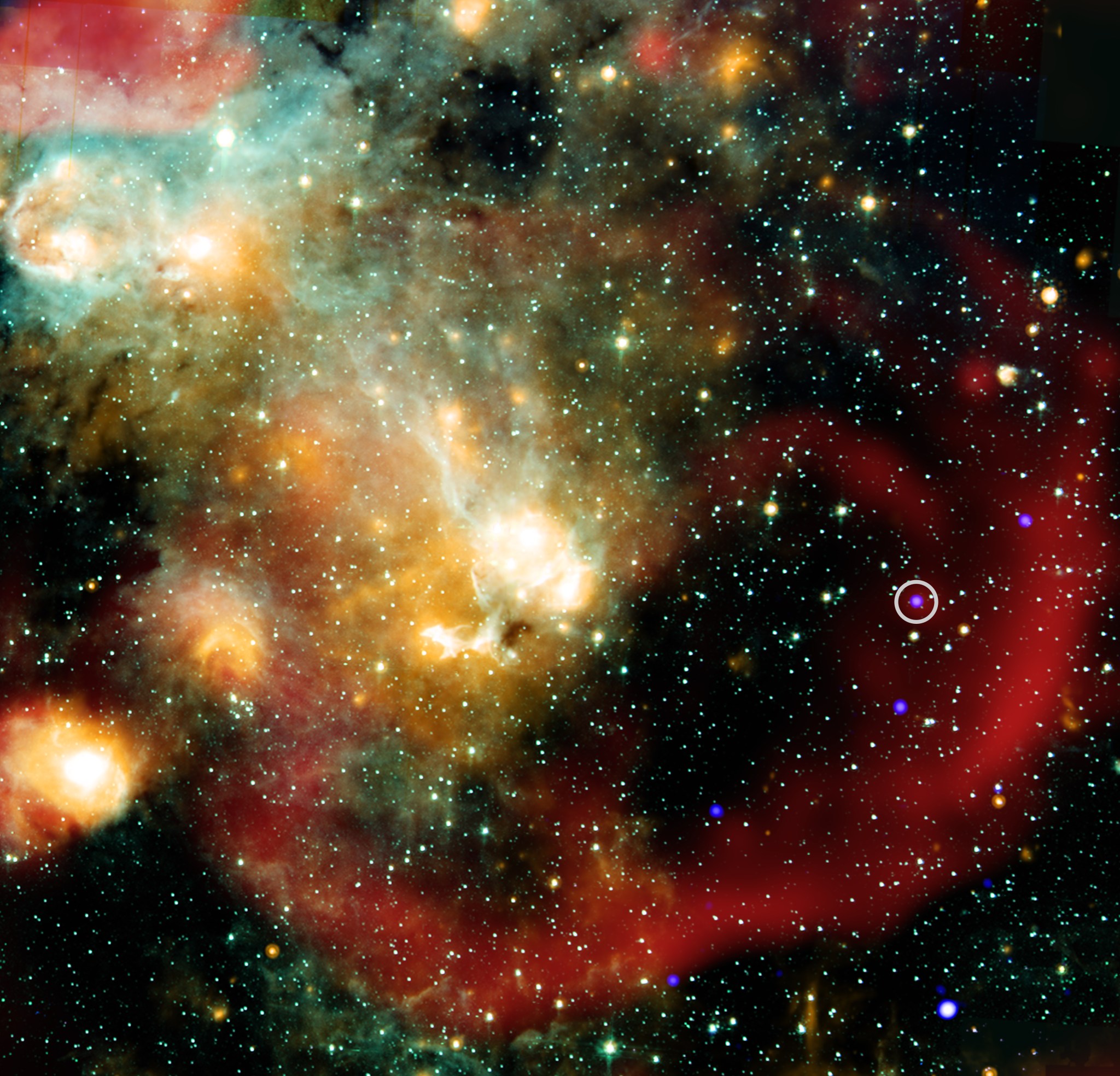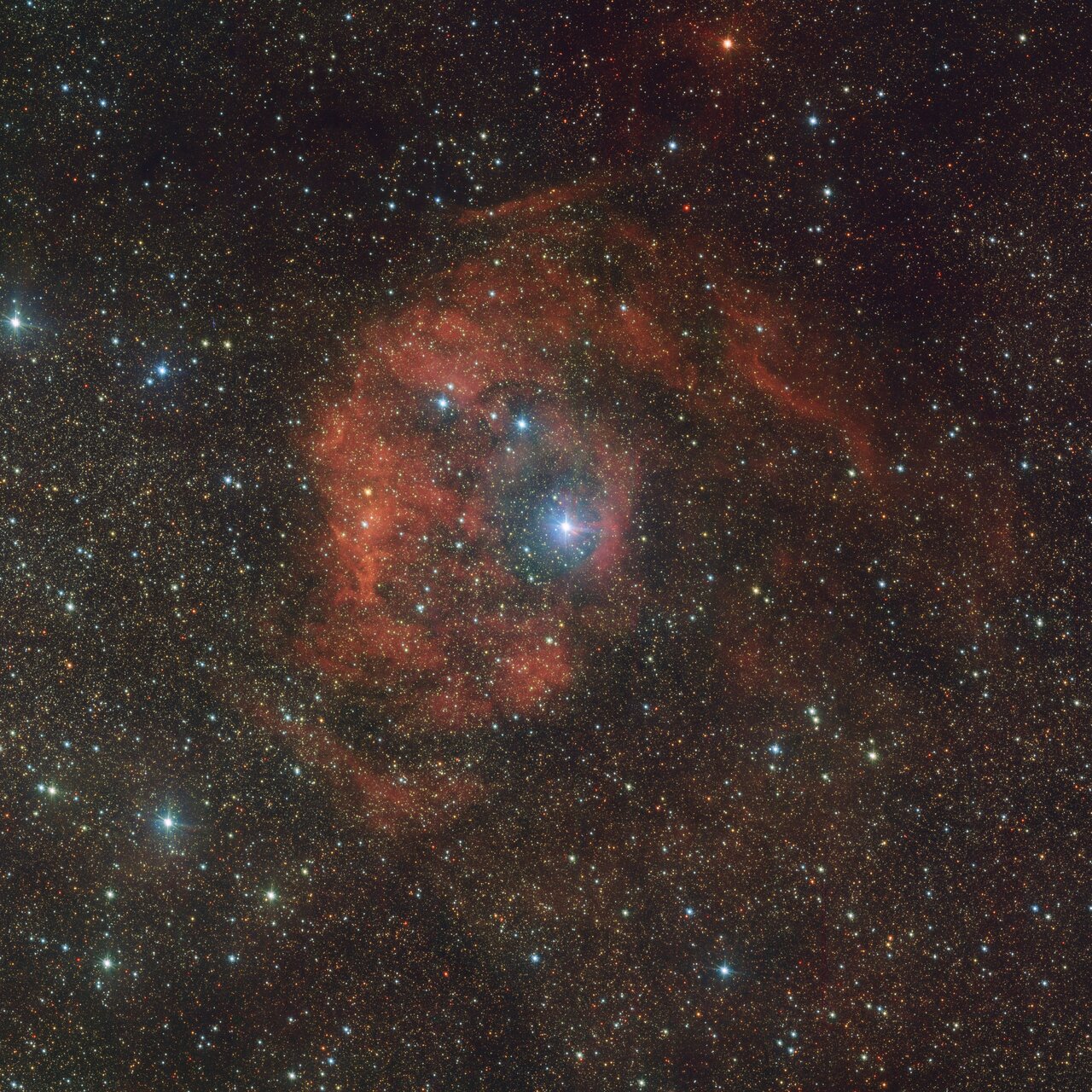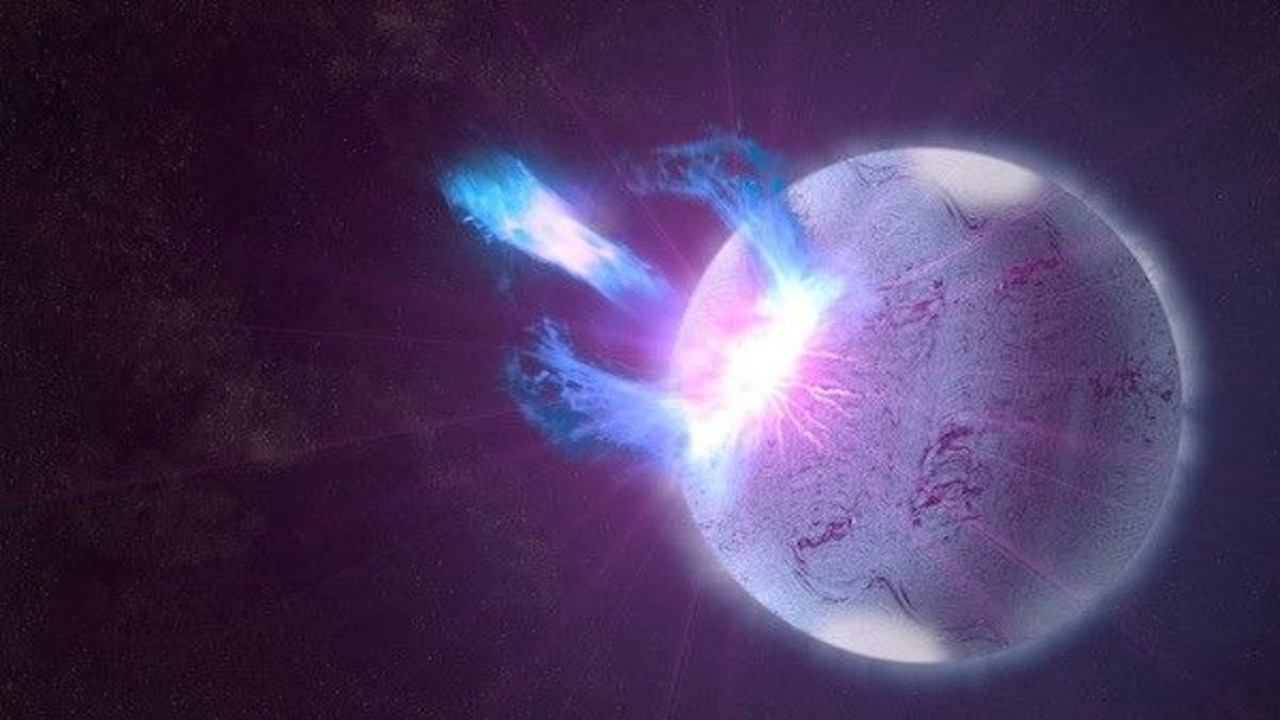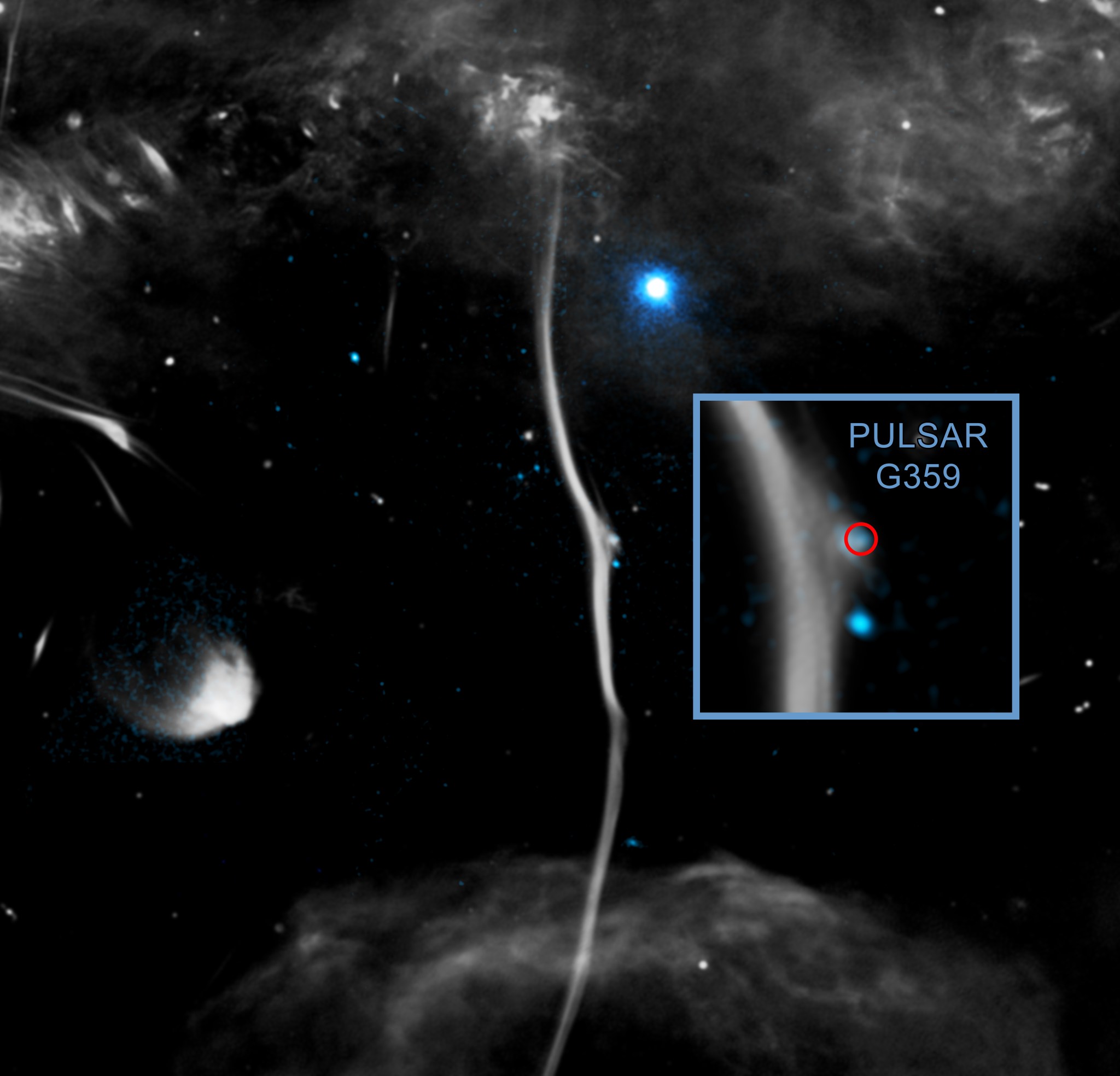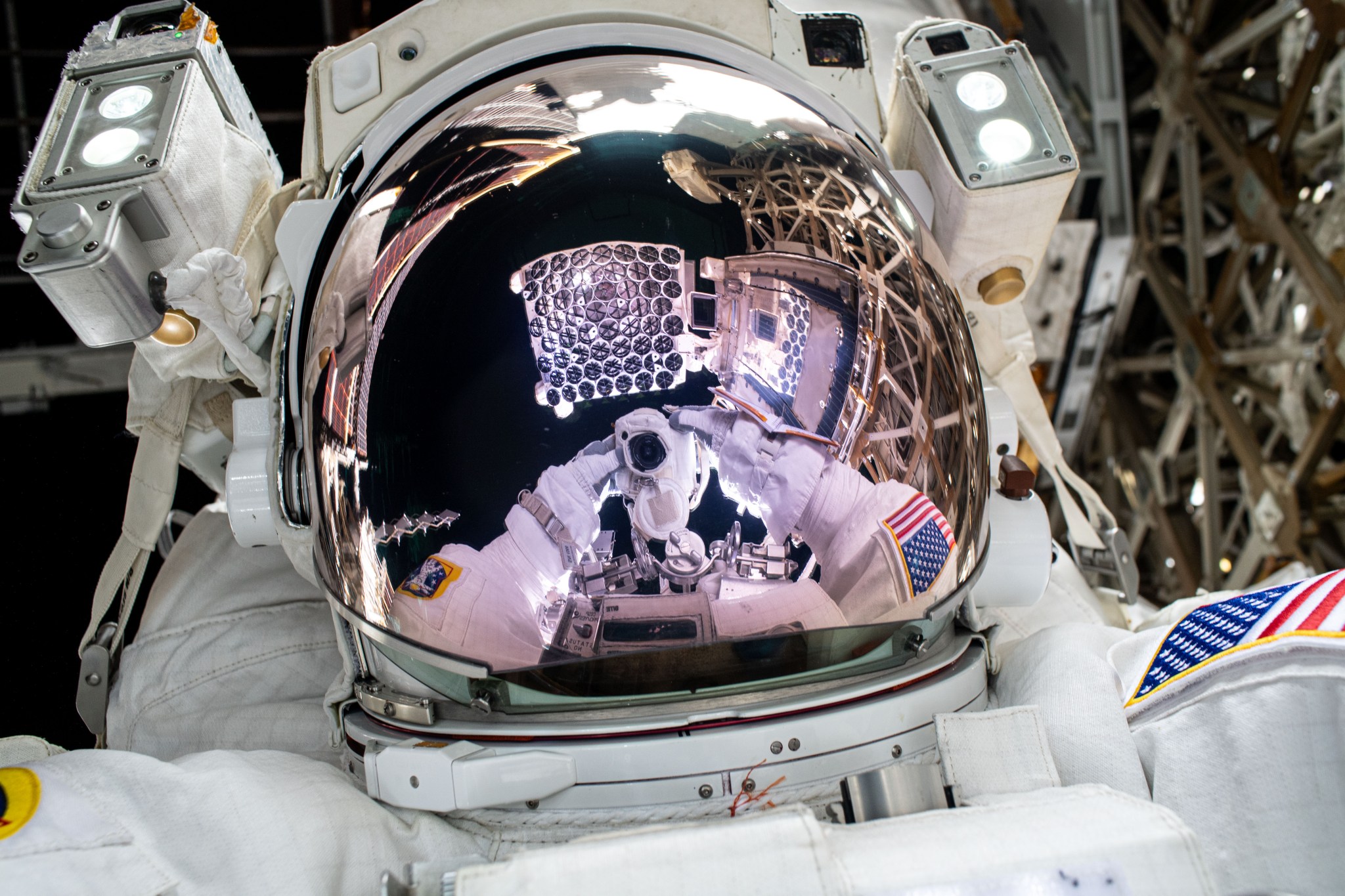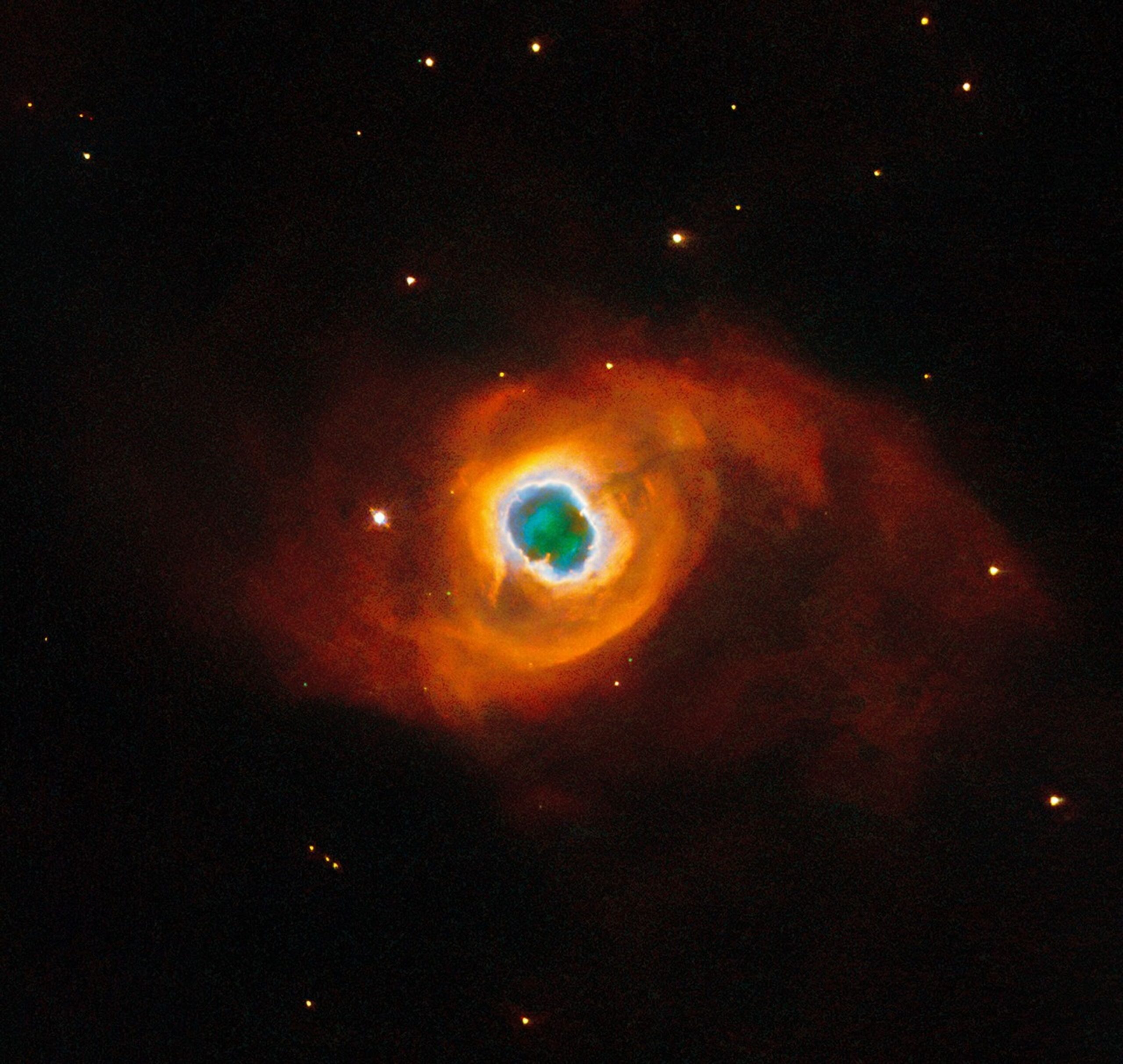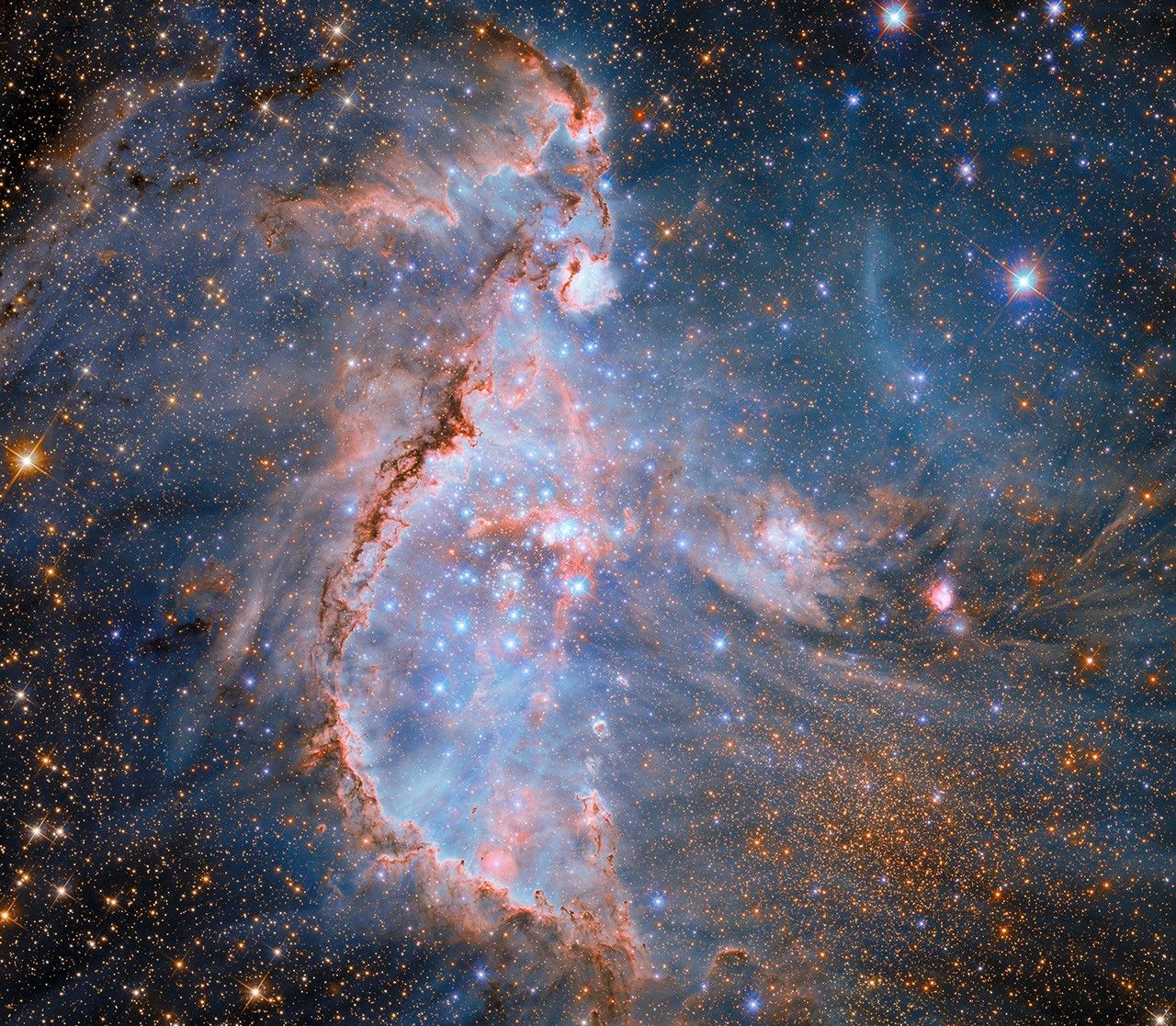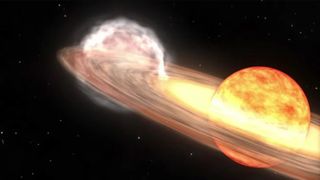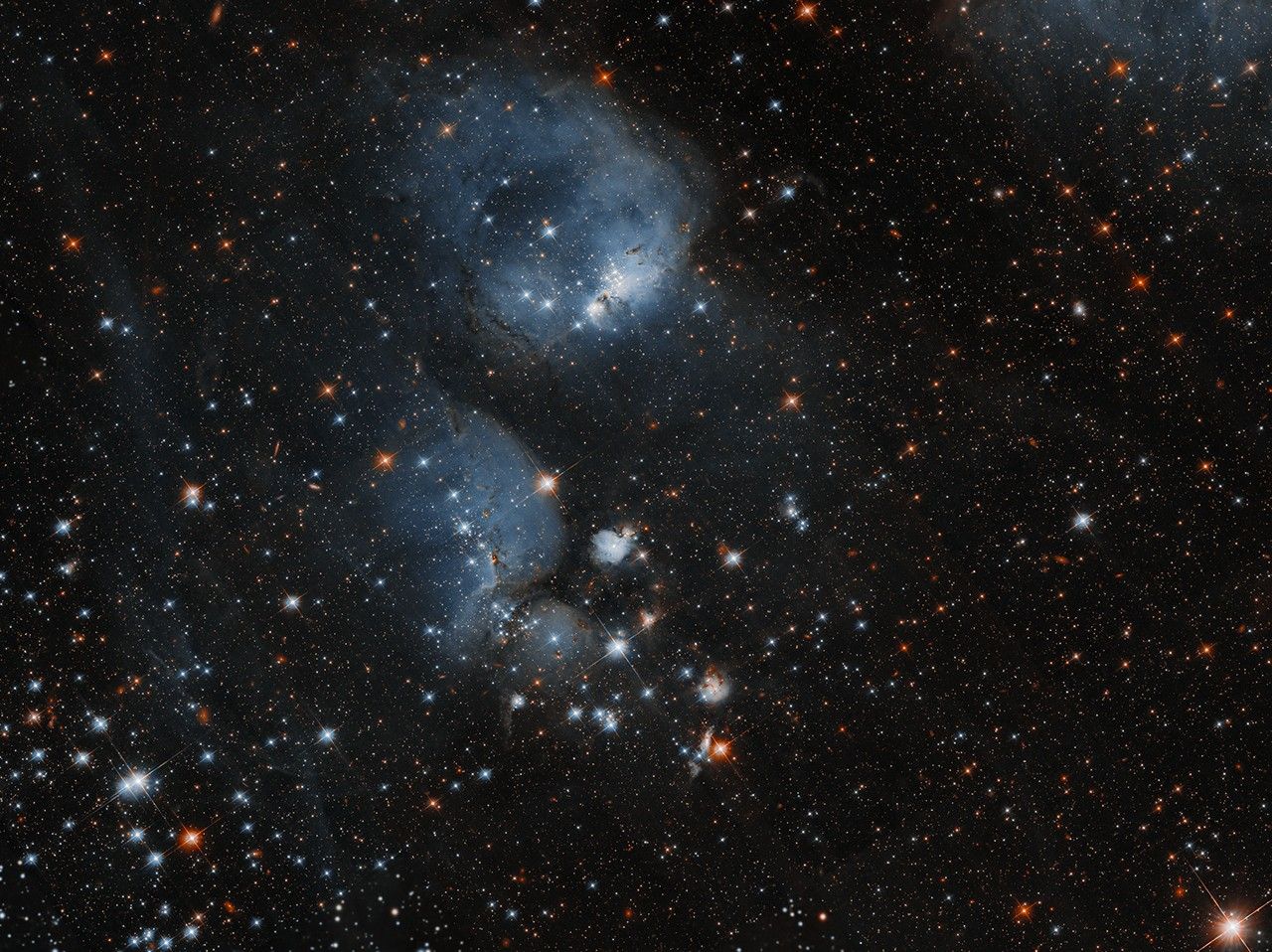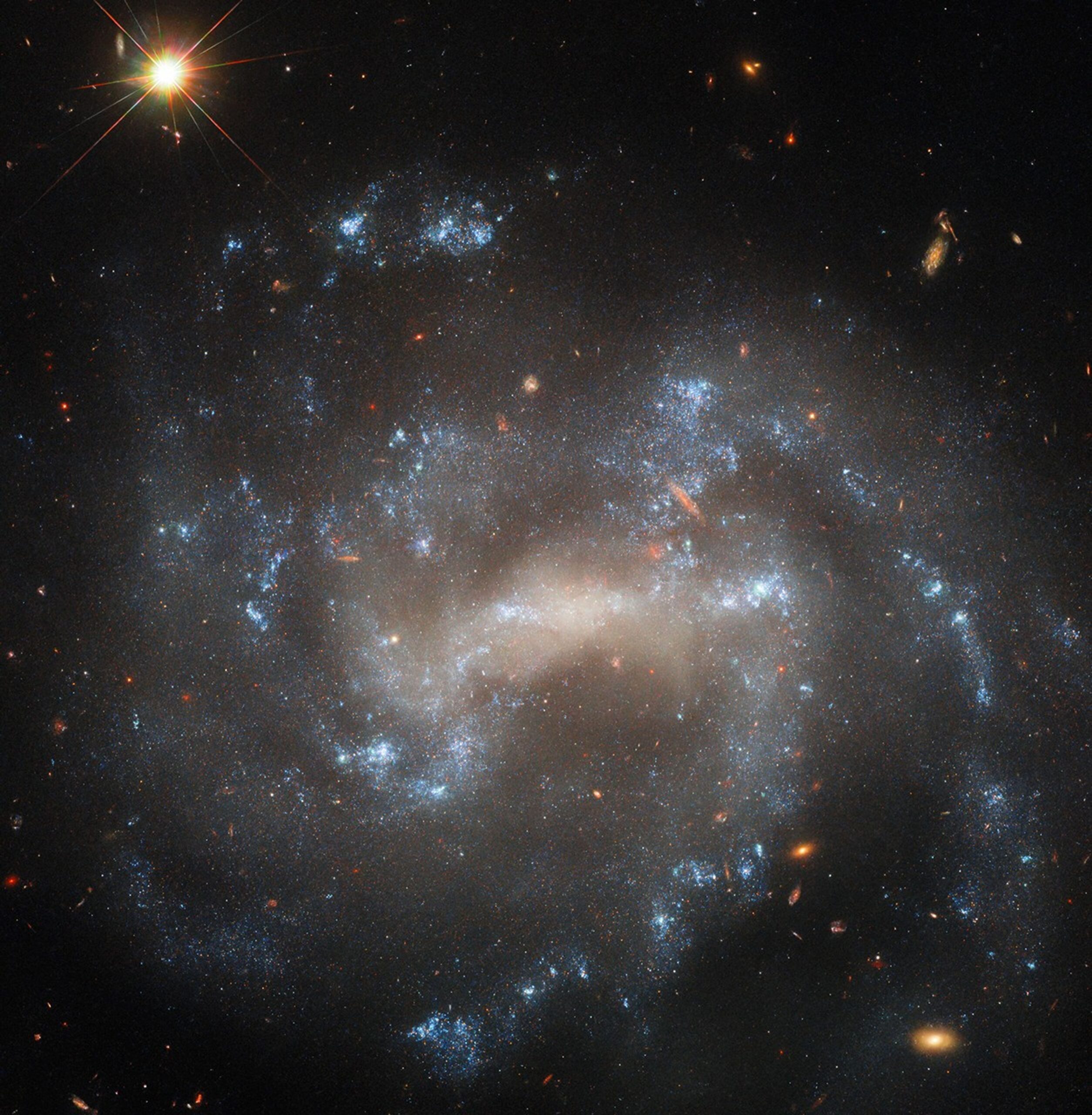X-ray: NASA/CXC/ICRAR, Curtin Univ./Z. Wang et al.; Infrared: NASA/JPL/CalTech/IPAC; Radio: SARAO/MeerKAT; Image processing: NASA/CXC/SAO/N. Wolk Scientists have discovered a star behaving like no other seen before, giving fresh clues about the origin of a new class of mysterious objects. As described in our press release, a team of astronomers combined data from NASA’s Chandra X-ray Observatory and the SKA [Square Kilometer Array] Pathfinder (ASKAP) radio telescope on Wajarri Country in Australia to study the antics of the discovered object, known as ASKAP J1832−0911 (ASKAP J1832 for short). ASKAP J1832 belongs…
Read MoreTag: Stars
Cosmic imposter bathes distant nebula in fiery red glow: ‘This star should not be here’
A dazzling new image from the European Southern Observatory’s VLT Survey Telescope in Chile has revealed an unusual cosmic tale unfolding 6,000 light-years away in the Serpens constellation. The snapshot features the vivid red nebula Sh2-46 — also known as Gum 80 — lit up in a fiery hue due to intense radiation coming from a brilliant blue-white star nestled at its heart. The stellar behemoth is among the rarest and most luminous stars in the universe, wielding significant influence over its surroundings. Despite its dominant presence, astronomers believe this…
Read MoreWhere does the universe’s gold come from? Giant flares from extreme magnetic stars offer a clue
Scientists have finally gathered direct proof of how the universe forges its heaviest elements, a process that has remained a mystery for over half a century. A team from the Flatiron Institute in New York City calculated that giant flares emitted by magnetars — highly magnetic types of collapsed stars known as neutron stars — could be the long-sought cosmic forge that creates the universe’s heavy elements. Just one of these giant flares could produce a planet’s worth of gold, platinum, and uranium. “It’s pretty incredible to think that some…
Read MoreNASA’s Chandra Diagnoses Cause of Fracture in Galactic “Bone”
X-ray: NASA/CXC/Northwestern Univ./F. Yusef-Zadeh et al; Radio: NRF/SARAO/MeerKat; Image Processing: NASA/CXC/SAO/N. Wolk Astronomers have discovered a likely explanation for a fracture in a huge cosmic “bone” in the Milky Way galaxy, using NASA’s Chandra X-ray Observatory and radio telescopes. The bone appears to have been struck by a fast-moving, rapidly spinning neutron star, or pulsar. Neutron stars are the densest known stars and form from the collapse and explosion of massive stars. They often receive a powerful kick from these explosions, sending them away from the explosion’s location at high speeds. Enormous structures resembling bones or…
Read MoreNICER Status Updates
April 17, 2025 Following Repair, NASA’s NICER Improves Daytime Measurements A NASA X-ray telescope on the International Space Station called NICER, or Neutron star Interior Composition Explorer, has regained additional daytime observation capabilities thanks to repairs completed during a spacewalk and a reconfiguration of its detectors. In May 2023, NICER developed a light leak in which unwanted sunlight began entering the instrument. Photos taken from inside the space station revealed several small areas of damage to the telescope’s thin thermal shields, which block sunlight while allowing X-rays through to the…
Read MoreHubble Captures a Star’s Swan Song
Explore Hubble Hubble Home Overview About Hubble The History of Hubble Hubble Timeline Why Have a Telescope in Space? Hubble by the Numbers At the Museum FAQs Impact & Benefits Hubble’s Impact & Benefits Science Impacts Cultural Impact Technology Benefits Impact on Human Spaceflight Astro Community Impacts Science Hubble Science Science Themes Science Highlights Science Behind Discoveries Hubble’s Partners in Science Universe Uncovered Explore the Night Sky Observatory Hubble Observatory Hubble Design Mission Operations Missions to Hubble Hubble vs Webb Team Hubble Team Career Aspirations Hubble Astronauts News Hubble News…
Read MoreHubble Spots Stellar Sculptors in Nearby Galaxy
Explore Hubble Hubble Home Overview About Hubble The History of Hubble Hubble Timeline Why Have a Telescope in Space? Hubble by the Numbers At the Museum FAQs Impact & Benefits Hubble’s Impact & Benefits Science Impacts Cultural Impact Technology Benefits Impact on Human Spaceflight Astro Community Impacts Science Hubble Science Science Themes Science Highlights Science Behind Discoveries Hubble’s Partners in Science Universe Uncovered Explore the Night Sky Observatory Hubble Observatory Hubble Design Mission Operations Missions to Hubble Hubble vs Webb Team Hubble Team Career Aspirations Hubble Astronauts News Hubble News…
Read MoreHold onto your hats! Is the ‘blaze star’ T Corona Borealis about to go boom?
A new set of predictions for the so-called “blaze star,” T Corona Borealis suggests the star might go nova on either March 27, November 10, or June 25, 2026. However, other astronomers are skeptical about these predictions, which are based on an implied pattern in the explosive system’s orbital configuration, “T Corona Borealis [T CrB] is a unique object that has fascinated amateur and professional astronomers for more than a century,” Léa Planquart of the Institut d’Astronomie et d’Astrophysique at the Université Libre de Bruxelles in Belgium, told Space.com. T…
Read MoreHubble Examines Stars Ensconced in a Cocoon of Gas
Explore Hubble Hubble Home Overview About Hubble The History of Hubble Hubble Timeline Why Have a Telescope in Space? Hubble by the Numbers At the Museum FAQs Impact & Benefits Hubble’s Impact & Benefits Science Impacts Cultural Impact Technology Benefits Impact on Human Spaceflight Astro Community Impacts Science Hubble Science Science Themes Science Highlights Science Behind Discoveries Hubble’s Partners in Science Universe Uncovered Explore the Night Sky Observatory Hubble Observatory Hubble Design Mission Operations Missions to Hubble Hubble vs Webb Team Hubble Team Career Aspirations Hubble Astronauts News Hubble News…
Read MoreHubble Spies a Spiral That May Be Hiding an Imposter
Explore Hubble Hubble Home Overview About Hubble The History of Hubble Hubble Timeline Why Have a Telescope in Space? Hubble by the Numbers At the Museum FAQs Impact & Benefits Hubble’s Impact & Benefits Science Impacts Cultural Impact Technology Benefits Impact on Human Spaceflight Astro Community Impacts Science Hubble Science Science Themes Science Highlights Science Behind Discoveries Hubble’s Partners in Science Universe Uncovered Explore the Night Sky Observatory Hubble Observatory Hubble Design Mission Operations Missions to Hubble Hubble vs Webb Team Hubble Team Career Aspirations Hubble Astronauts News Hubble News…
Read More